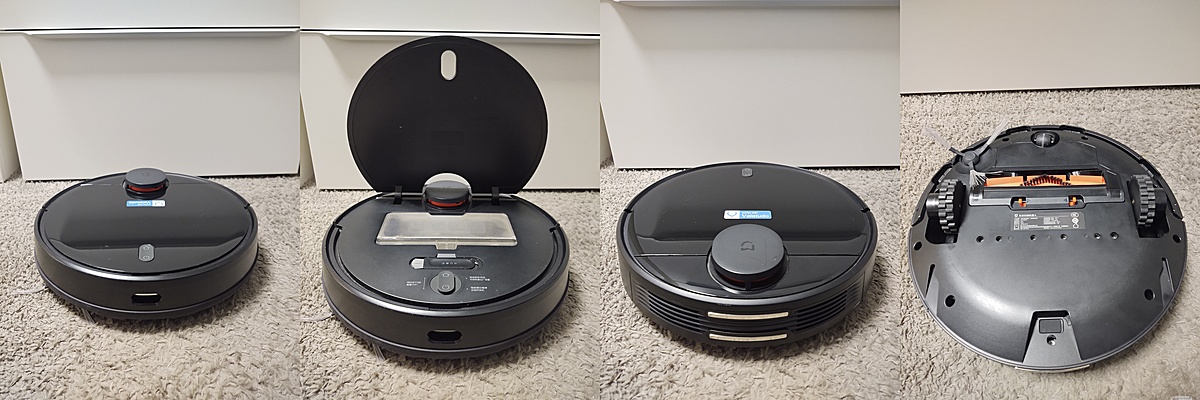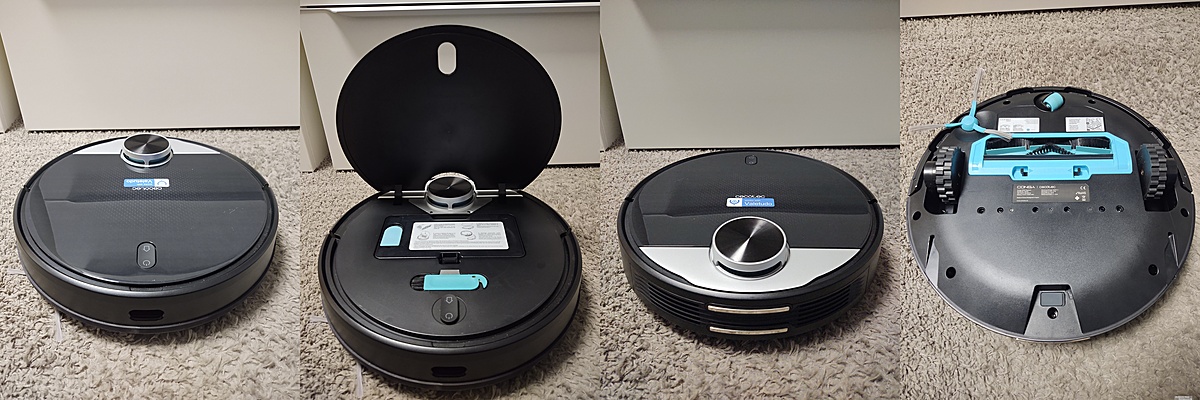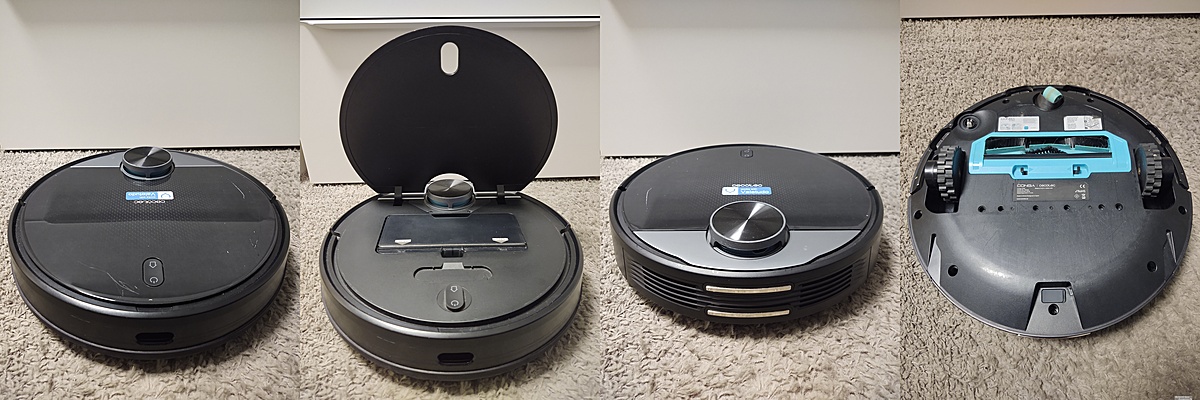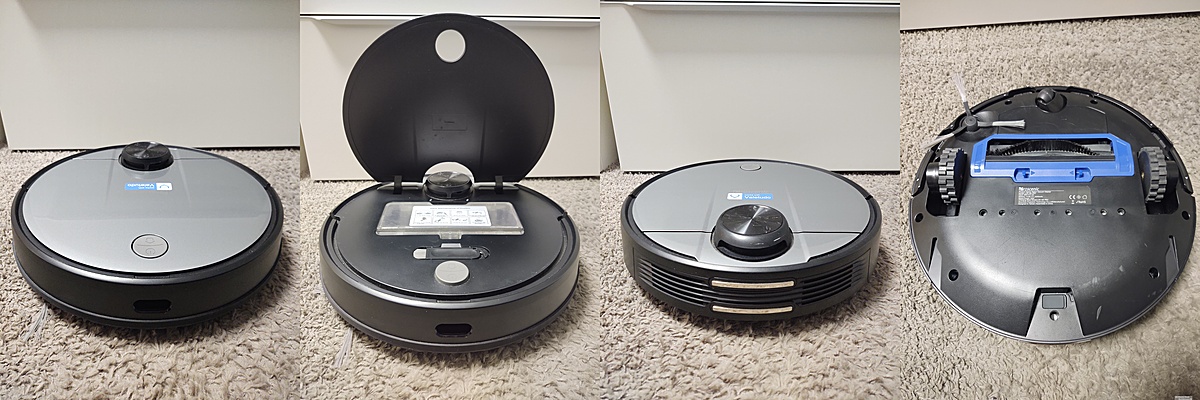Nimbus
Open source cloud replacement for vacuum robots enabling local-only operation
View the Project on GitHub NimbusVacuum/Nimbus
General
Newcomer Guide Why Nimbus? Why not Nimbus? Getting Started Supported Robots Rooting Essentials Buying Supported Robots
Installation
Usage
Implementation Overview Capabilities Overview Upgrading Firmware Updates
Companion Apps
Valetudo Companion (Android) Valetudo Tray Companion (Windows) Valeronoi Lovelace Nimbus Map Card I Can't Believe It's Not Valetudo node-red-contrib-valetudo Fun & Games Other Noteworthy Projects
Integrations
Misc
FAQ Style Guide Troubleshooting
Development

Supported Robots
At the time of writing, (2022-11-20), Nimbus supports more than 20 different Robots.
If you’re interested in hardware specifics, teardowns and more, check out Dennis Giese’s Vacuum Robot Overview.
Please note that Vacuum Robots tend to look very similar to each other. Before you make any assumptions, please consider asking in the Telegram Group or on the IRC. You can only brick your robot once.
Unless noted otherwise, you can assume that these robots were tested by us.
HOWEVER if noted otherwise, please be aware that the experience can be bad and not representative for Nimbus.
There may be no one that can help you if something goes wrong. You might even end up with a permanently bricked robot.
Hint:
You can use Ctrl + F to look for your model of robot.
Please make sure to read and understand the information written there.
Table of Contents
Xiaomi
Robots sold under the Xiaomi brand are actually made by varying manufacturers.
Don’t assume any compatibility of consumables or other parts as well as rooting instructions.
Xiaomi V1

The Xiaomi V1 is made by Roborock. It is sold as:
- Xiaomi Mi Robot Vacuum
Note:
This robot never received firmware updates that enable persistent maps. This means that it creates a new one on every cleanup.
There are no virtual walls etc. Do not buy this new. There are much better options.
Rooting is pretty easy if your device was manufactured before 2020-03.
In that case, it only requires a Laptop. All warranty seals stay intact.
If your robot is newer than that, full disassembly will be required.
Rooting instructions:
Xiaomi 1C

The Xiaomi 1C is made by Dreame. It is sold as:
- Mi Robot Vacuum-Mop
- Xiaomi 1C
- STYTJ01ZHM
Important note:
There are multiple hardware revisions under the same name. Only the dreame.vacuum.mc1808 is currently supported.
Rooting is pretty easy, only requiring a 3.3v USB UART Adapter and almost no disassembly. All warranty seals stay intact.
Rooting instructions:
Xiaomi 1T

The Xiaomi 1T is made by Dreame. It is sold as:
- Mi Robot Vacuum-Mop 2 Pro+
- Xiaomi Mijia 1T (CN)
- Mi Robot Vacuum-Mop 1T (CN)
- STYTJ02ZHM
Rooting is pretty easy, only requiring a 3.3v USB UART Adapter and almost no disassembly. All warranty seals stay intact.
Rooting instructions:
Xiaomi P2148

The Xiaomi P2148 is made by Dreame. It is sold as:
- Mijia Robot Vacuum-Mop Ultra Slim
- Mijia Robot Vacuum Mop Ultra Slim
- Xiaomi Mijia Ultra-Thin Robot Vacuum
- Xiaomi Mijia Ultra Slim
Rooting is pretty easy, only requiring a 3.3v USB UART Adapter and almost no disassembly. All warranty seals stay intact.
With its 5.5cm height and 32.3cm diameter, this robot offers a solution for some tricky homes. As it is china exclusive, spare parts may be hard to find in the rest of the world.
On initial root, it might be required to do a factory reset so that the device.conf gets regenerated.
There is no reset button on this robot. Instead, press and hold the two buttons for
- < 1s for the UART shell spawn
- > 3s for Wi-Fi reset
- > 5s for full factory reset
Rooting instructions:
Xiaomi Vacuum-Mop P

The Vacuum-Mop P is using the Viomi cloud stack but is actually made by 3irobotix.
There are three robots with different IDs under this name, and they’re all 3irobotix CRL-200S inside.
It’s very confusing. If unsure, please ask us first.
These are sold under the names:
- Mi Robot Vacuum-Mop P
- Mi Robot Vacuum-Mop Pro (but nut the ijai one!!)
- Mijia STYJ02YM
Rooting is pretty easy, only requiring a Linux Laptop and a micro USB cable.
It might be required to remove the battery but that can be done without touching any warranty seals.
Warning:
Unfortunately, there are some unresolved issues with the Mijia STYTJ02YM viomi.vacuum.v8.
If you have that robot, you might want to ask for assistance.
Note:
While Nimbus works with their model firmwares, the recommended rooting procedure is to flash these with a Viomi V6 firmware as that has more features.
Rooting instructions:
Dreame
D9

The Dreame D9 is Dreame’s first ever Lidar-based vacuum robot. It is sold as:
- Dreame D9
Rooting is pretty easy, only requiring a 3.3v USB UART Adapter and almost no disassembly. All warranty seals stay intact.
Rooting instructions:
D9 Pro

The Dreame D9 Pro is sold as:
- Dreame D9 Pro
Important note:
Dreame never released any firmware updates for this robot.
However, we were able to port the regular D9 firmware to it, which is a huge improvement over the stock D9 Pro experience.
Rooting is pretty easy, only requiring a 3.3v USB UART Adapter and almost no disassembly. All warranty seals stay intact.
Rooting instructions:
F9

The Dreame F9 is sold as:
- Dreame F9
Rooting is pretty easy, only requiring a 3.3v USB UART Adapter and almost no disassembly. All warranty seals stay intact.
Rooting instructions:
L10 Pro

The Dreame L10 Pro is sold as:
- Dreame L10 Pro
Rooting is pretty easy, only requiring a 3.3v USB UART Adapter and almost no disassembly. All warranty seals stay intact.
Rooting instructions:
Z10 Pro

The Dreame Z10 Pro is sold as:
- Dreame Z10 Pro
- Dreame Bot L10 Plus (CN)
Rooting is pretty easy, only requiring a 3.3v USB UART Adapter and almost no disassembly. All warranty seals stay intact.
Rooting instructions:
W10

The Dreame W10 is sold as:
- Dreame W10
Rooting is fairly easy, only requiring a 3.3v USB UART Adapter and almost no disassembly. All warranty seals stay intact.
Because of its port placement, it can be a bit difficult to connect the required cables for rooting.
If you’re struggling to do that, consider removing the Lid to gain better access to the connector.
Rooting instructions:
MOVA
MOVA apparently was a rather short-lived sub-brand(?) of Dreame
MOVA Z500

The MOVA Z500 is made by Dreame. It is sold as:
- MOVA Z500
Rooting is pretty easy, only requiring a 3.3v USB UART Adapter and almost no disassembly. All warranty seals stay intact.
Rooting instructions:
Roborock
Roborock S5

The Roborock S5 is sold as:
- Roborock S5
Rooting is pretty easy, only requiring a Laptop. All warranty seals stay intact.
Rooting instructions:
Roborock S6

The Roborock S6 is sold as:
- Roborock S6
Important Note:
I do not own this robot. There can be unknown issues with equally unknown solutions.
Not everything might work. The available firmware might be outdated. The experience might be subpar.
Rooting requires full disassembly.
Rooting instructions:
Roborock S6 Pure

The Roborock S6 Pure is sold as:
- Roborock S6 Pure
Important Note:
I do not own this robot. There can be unknown issues with equally unknown solutions.
Not everything might work. The available firmware might be outdated. The experience might be subpar.
Rooting requires full disassembly.
Rooting instructions:
Roborock S4

The Roborock S4 is sold as:
- Roborock S4
Important Note:
I do not own this robot. There can be unknown issues with equally unknown solutions.
Not everything might work. The available firmware might be outdated. The experience might be subpar.
Rooting requires full disassembly.
Rooting instructions:
Roborock S4 Max

The Roborock S4 Max is sold as:
- Roborock S4 Max
Important Note:
I do not own this robot. There can be unknown issues with equally unknown solutions.
Not everything might work. The available firmware might be outdated. The experience might be subpar.
Rooting requires full disassembly.
Rooting instructions:
Roborock S5 Max

The Roborock S5 Max is sold as:
- Roborock S5 Max
Rooting requires full disassembly.
Rooting instructions:
Roborock S7

The Roborock S7 is sold as:
- Roborock S7
Important Note:
I do not own this robot. There can be unknown issues with equally unknown solutions.
Not everything might work. The available firmware might be outdated. The experience might be subpar.
Rooting requires full disassembly.
Warning:
- It is easy to mess up the reassembly and (permanently) break the mopping feature.
- The hardware is cut down so much that Nimbus barely fits on it. This not a good robot for Nimbus.
Rooting instructions:
Viomi
Viomi is a brand that uses existing robot designs with a slightly customized cloud.
They’re not a robot manufacturer.
Viomi V6

The Viomi V6 is actually a 3irobotix CRL-200S inside. It is sold as:
- Viomi Cleaning Robot
- Viomi V2
- Viomi V2 Pro
Rooting is pretty easy, only requiring a Linux Laptop and a micro USB cable.
It might be required to remove the battery but that can be done without touching any warranty seals.
Rooting instructions:
Cecotec
Conga is a brand that uses existing robot designs with a slightly customized cloud.
They’re not a robot manufacturer.
Conga 3290

The Conga 3290 is actually a 3irobotix CRL-200S inside. It is sold as:
- Conga 3290
Important note:
Because Congas use a non-miio cloud implementation, getting them to work with Nimbus means reflashing them to a Viomi V6.
That’s possible, because the hardware is exactly the same.
Rooting is pretty easy, only requiring a Linux Laptop and a micro USB cable.
It might be required to remove the battery but that can be done without touching any warranty seals.
Rooting instructions:
Conga 3790

The Conga 3790 is actually a 3irobotix CRL-200S inside. It is sold as:
- Conga 3790
Important note:
Because Congas use a non-miio cloud implementation, getting them to work with Nimbus means reflashing them to a Viomi V6.
That’s possible, because the hardware is exactly the same.
Rooting is pretty easy, only requiring a Linux Laptop and a micro USB cable.
It might be required to remove the battery but that can be done without touching any warranty seals.
Rooting instructions:
Proscenic
Proscenic is a brand that uses existing robot designs with a slightly customized cloud.
They’re not a robot manufacturer.
Proscenic M6 Pro

The Proscenic M6 Pro is actually a 3irobotix CRL-200S inside. It is sold as:
- Proscenic M6 Pro
Important note:
Because Proscenic robots use a non-miio cloud implementation, getting them to work with Nimbus means reflashing them to a Viomi V6.
That’s possible, because the hardware is exactly the same.
Rooting is pretty easy, only requiring a Linux Laptop and a micro USB cable.
It might be required to remove the battery but that can be done without touching any warranty seals.
Rooting instructions:
Nimbus
Open source cloud replacement for vacuum robots enabling local-only operation
View the Project on GitHub NimbusVacuum/Nimbus
General
Newcomer Guide Why Nimbus? Why not Nimbus? Getting Started Supported Robots Rooting Essentials Buying Supported Robots
Installation
Usage
Implementation Overview Capabilities Overview Upgrading Firmware Updates
Companion Apps
Valetudo Companion (Android) Valetudo Tray Companion (Windows) Valeronoi Lovelace Nimbus Map Card I Can't Believe It's Not Valetudo node-red-contrib-valetudo Fun & Games Other Noteworthy Projects
Integrations
Misc
FAQ Style Guide Troubleshooting